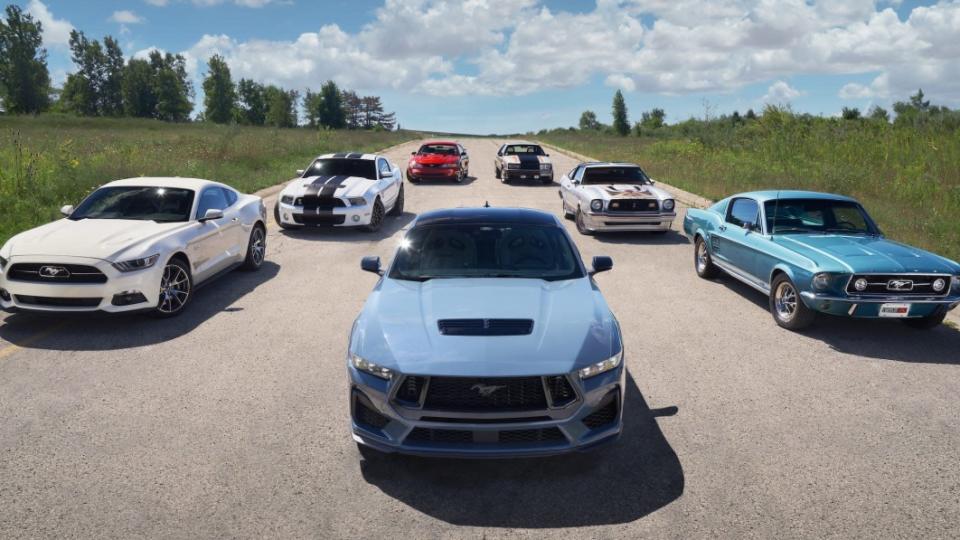Ford Mustang: See how the iconic model has evolved through the decades

Ford took the wraps off of the next generation of the iconic Mustang on Wednesday.
The seventh-generation Mustang could be the last gas-powered version of the sports car.
The Mustang debuted in 1964 as a sporty and cheap car for younger buyers and has endured through several iterations and nearly six decades.
Ford unveiled the seventh generation of the Mustang on Wednesday at the Detroit auto show — and it could be the last combustion-engine version of the iconic sports car.
Read more: Ford's new Mustang has crisp looks and a feature that lets you rev the engine from outside the car
Ford is powering full steam ahead toward an electric future, planning to invest billions in new factories, batteries, and models. There may not be room in Ford's future for another gas-powered Mustang.
"People have asked me if this will be your last internal combustion Mustang? And the answer is, 'we'll see,'" Bill Ford, the company's executive chair and a descendent of its founder, told reporters on Wednesday.
Some analysts think the Mustang is on its way out, following in the footsteps of rivals like the Dodge Challenger.
As the Mustang heads toward extinction, it's only fitting to take a look back at the last six decades of the legendary sports car.
On April 17, 1964, Henry Ford II unveiled the Ford Mustang at the World's Fair in Flushing Meadows, New York.
It was conceived as a compact, sporty coupe for the Baby Boomer generation that was just coming of age.
Ford wanted the Mustang to be stylish, youthful, and inexpensive. It started at $2,300, equivalent to around $22,000 today.
The Mustang was an overnight success, selling 400,000 units in the first year and a million within two years.
Some say the Mustang was named after a World War II fighter plane, while others take the horse logo to heart. In truth, not even Ford seems to know for sure what the Mustang is named after.
Source: Ford
The Mustang birthed the "pony car" segment, which went on to include the Chevrolet Camaro and Dodge Challenger.
A few years after the Mustang's 1964 debut, Ford launched the Boss 302, a heavily modified, high-performance model. It's one in a long line of high-powered Mustang variants.
Based on the Ford Pinto platform, the 1970s Mustang II was compact compared to the midsize models that came before it.
This special "King Cobra" version had a very limited run of just 4,313 units.
The third-generation Mustang, known as the Fox-body, was sold between 1979 and 1993.
It got a major redesign in the middle of its production run that swapped out the square headlights for a more rounded design.
The fourth-generation Mustang won MotorTrend's 1994 Car of the Year award. The car's powerful engine options and improved handling were especially praised.
Source: Motor Trend

 Yahoo Autos
Yahoo Autos 
